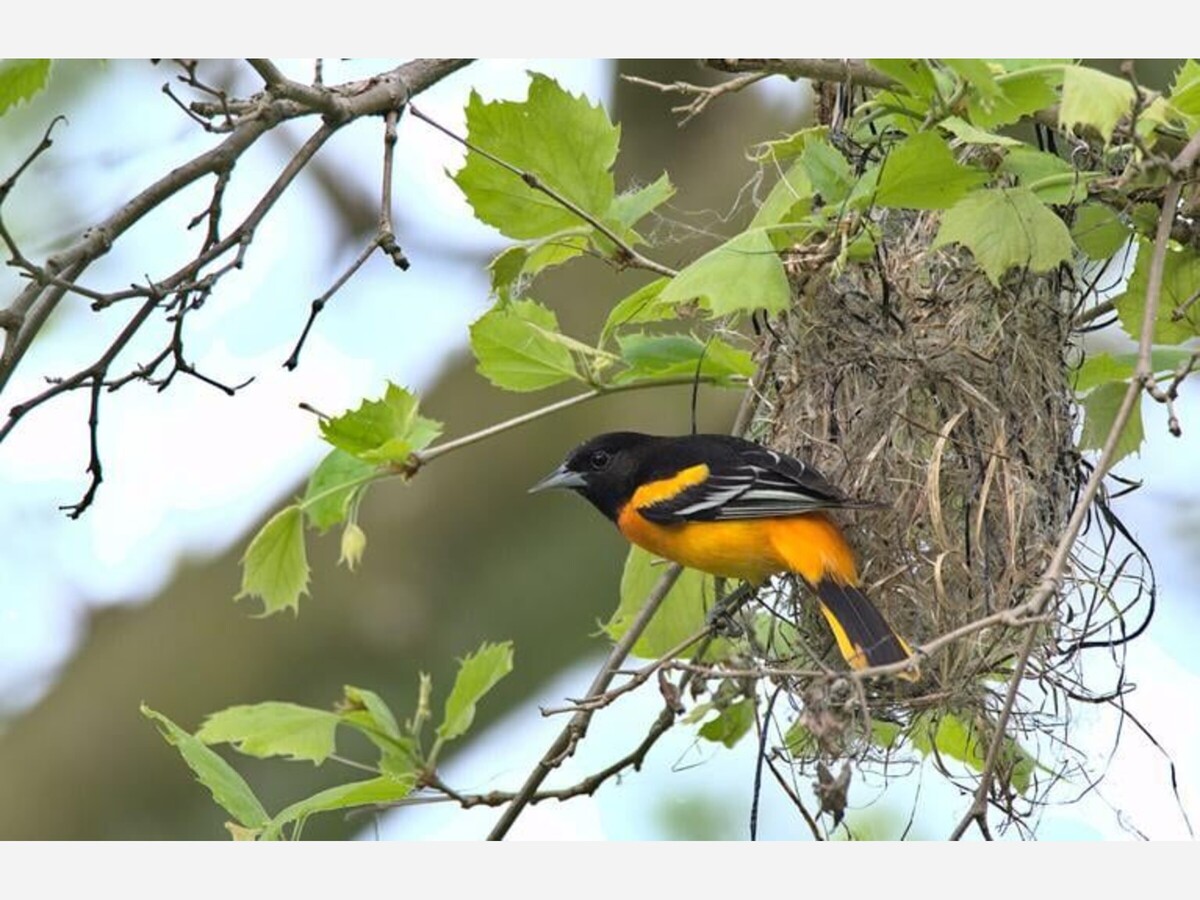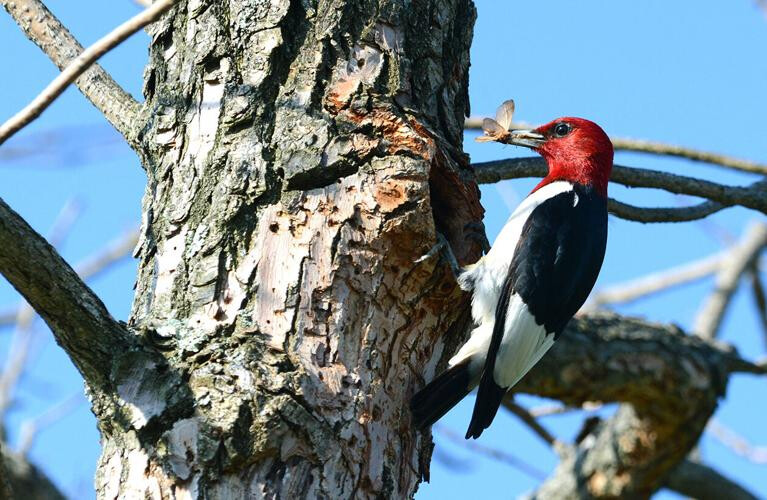Image

Cups, cavities, scrapes or spheres – to each bird its own nest
By: Kathy Reshetiloff, bayjournal.com
I recently took advantage of the spring weather to walk around my yard to determine what needed to be spruced up.
Many of my trees or shrubs had not leafed out. As I passed my Virginia sweetspire bush, I noticed an empty nest left by a robin last spring. A rather ordinary nest, it was cup-shaped and made of woven grass.
As I moved around the yard, a small gray bird caught my attention, flying back and forth between the nearby woods and a spot under my deck. A closer look confirmed that the bird, an Eastern phoebe, was building a nest on a support beam. Unlike the robin’s nest, this one was being created with carefully placed tiny pieces of moss and mud.
Birds are enormously diverse, of course — differing in size, color, song, food and habitat. So perhaps it’s no surprise that their nests are just as varied. Some look simple and plain while others are engineering marvels. Some nests are lined with plant fibers, feathers and other materials to cushion the eggs as the adult bird moves around the nest. But they all serve the same purpose: to protect eggs and growing hatchlings.
The location of a nest is carefully chosen to provide shelter from wind, rain and sun.
Eggs and chicks are far more vulnerable to predators than their parents are, so many nests are well hidden or thoroughly camouflaged with leaves, grass, moss, bark and other natural detritus.
Here is a sampling of some of the types of bird nests in the Chesapeake Bay region that you might find in your backyard or along your favorite hiking trail.

Although most common and therefore most familiar, cup-style nests differ greatly in size, dimensions and depth, depending on the bird species. Placement varies widely as well. Cup nests may be wedged into the forks of tree branches, tucked into the dense growth of a bush or even situated on the ground. You’ll also find them on human infrastructure, like window ledges, eaves and deck supports, and in the rafters of open buildings like sheds and barns.
Cup-shaped nests are used by robins, FINISH READING HERE